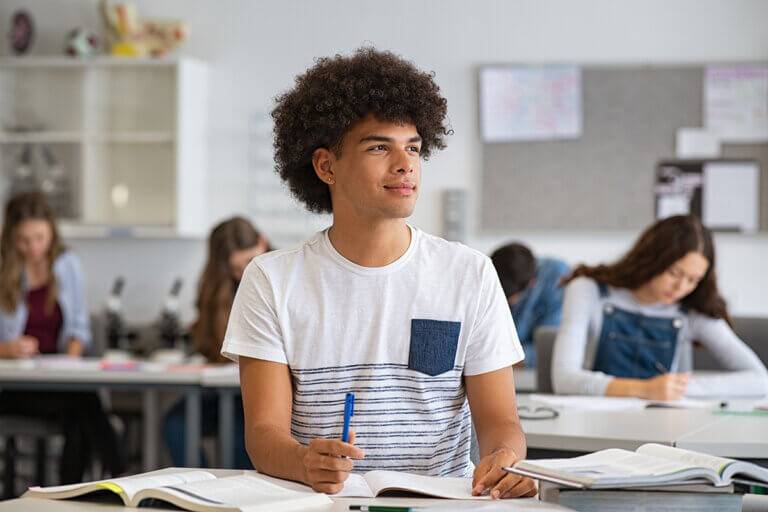As districts turn their attention to next fall, they are faced with the unfortunate probability that school will continue to be remote for at least some students at least some of the time. In this moment, education policymakers and practitioners should pause to consider what the experience can teach us. COVID-19 along with our shift to remote instruction has made us confront features of teaching and learning that have always been true but that we haven’t always structured schooling to accommodate. Personalized, project-based learning and competency concepts can provide frameworks for doing school better. Here are five things to consider in planning for next year and beyond:
1. Organizing School Around Students
As we shifted to remote learning we had to address students’ disparate access to computers and broadband and also had to take into account that some kids were working or supervising younger siblings, some didn’t have space at home for quiet study, some didn’t have parents who could support their learning. The reality is that these and so many other obstacles have always had an unequal impact on how kids learn. What would it mean to build strategies into the culture and structure of traditional school to support students in overcoming the obstacles they face; to put students at the center of how we organize schools? The changes might include flexibility in scheduling and learning environments and the ability to support a variety of learning styles with personalized learning models that provide different pathways and varied pacing based on individual learning needs.
2. Student Motivation to Engage
In remote learning, even students who had all the resources they needed to engage didn’t always do so, especially when no grades or credit were at stake. Without face-to-face accountability, remote learning required special attention to providing meaningful opportunities to learn. Worksheets and lectures didn’t cut it. The reality is that even in traditional school, we can’t control student motivation. We may have more influence over what they sit through and what they turn in, but we can’t force them to be interested and excited. Capitalizing on the natural creativity of kids to co-design standards-aligned, meaningful learning experiences and opportunities to demonstrate that learning makes school more engaging in both remote and traditional settings.
3. Mastery, Not Seat Time
There is no corollary for seat time in remote learning. The number of times students attend Zoom meetings or the number of hours they log into an online program provides nothing to inform instruction. Likewise, it makes no sense to force students who weren’t able to connect to sit through some kind of alternate meeting or require they hand in some number of worksheets to pass a course. It’s worth considering that even in traditional schooling, sitting through lessons or turning in work isn’t really relevant to what we want students to accomplish. We want them to be able to demonstrate they have mastered the necessary content, concepts, and skills. Competency-based education concepts can provide a framework for developing learning opportunities that allow students to progress at their own pace and advance to more challenging work as they demonstrate mastery.
4. Assessment
Conventional, content-heavy tests are difficult to pull off in an online environment. Cheating is just too easy. Instead, many teachers in remote learning found that performance-based assessments – asking students to apply what they learned by creating something – provided better experiences. But asking students to prepare for an assessment by “learning” information that can be googled isn’t particularly helpful in traditional school either. If transparent and aligned to standards, performance assessments can provide valid and useful evidence of learning that better informs instruction and allows students to evaluate their own progress, even in a traditional setting.
5. Meeting Students Where They Are
There are many suggestions for evaluating how much individual students have learned or lost when they return to school next year, understanding there will be huge variance since some have been able to meaningfully engage in remote learning and others may not have done anything academic since the shutdown. The reality is that students have always returned from summer at different places, but this year’s circumstances make it hard to justify proceeding as normal. In the fall, and all the time, we need personalized learning models to provide students with differentiated supports based on their needs. We should expect that every student is capable of achieving standards, and then meet them where they are and do what it takes to support them to get where they need to be.
Resources and expertise exist to help schools do remote learning more effectively. They can help make traditional school better, too. It’s worth considering incorporating more personalized, project-based learning and competency concepts into the planning for next school year and making them a part of school even once we are past this crisis.


